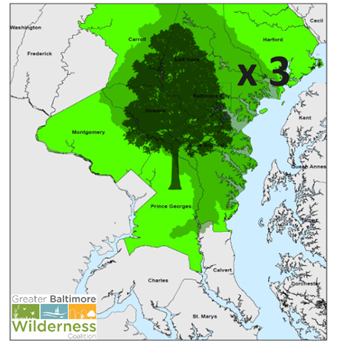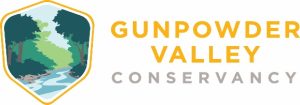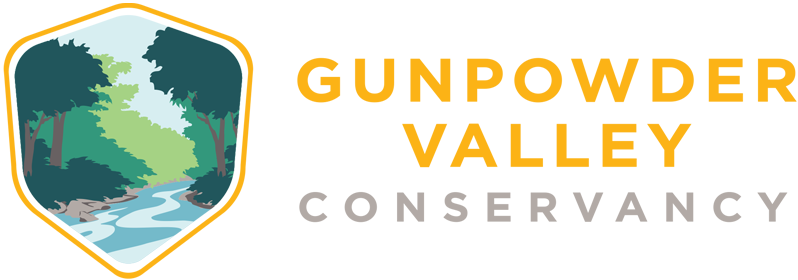
The next 10 years are a critical window for taking bold action around climate change and biodiversity loss. Gunpowder Valley Conservancy (GVC) is proud be part of an innovative collaboration with the Greater Baltimore Wilderness Coalition to triple our tree planting efforts by 2023. Our work will complement similar projects by other government agencies and non-profit organizations in Baltimore City, Baltimore County and Howard County to get more trees in the ground.
Everyone knows trees help reduce air pollution. Did you know that trees also play an important role in the health of our waterways as well as our own?!
- Tree roots decrease erosion and stabilize streambanks
- Tree roots absorb stormwater runoff (pollution)
- Tree cover maintains cooler water temperatures along streams
- Tree cover provides cooling relief to city residents during warm weather (and can reduce electricity usage!)
- Improved air quality linked to reduced rates of cardiac disease and asthma
- Urban trees and green spaces promote increased physical activity and can provide much needed solace from daily stressors
GVC can provide several more landowners with receive FREE trees as part of the Planting the Future initiative.
- Ideal property size is 1+ acres (100 trees)
- Will consider 0.5+ acre (50 trees) near streams
- Properties must be located within the Gunpowder watershed
Sign up today for a free site assessment. Contact Peg Perry, Senior Reforestation Specialist by email or 443-415-7969.
GVC staff will work with you to identify a variety of native tree and shrub species appropriate for your property. We will provide free trees, supplies, and volunteer crews, as well as provide tree maintenance for several years afterwards to make sure the trees are growing properly.
Planting the Future is funded by the National Fish and Wildlife Foundation (NFWF) in partnership with the Greater Baltimore Wilderness Coalition. Chartered by Congress in 1984, the NFWF protects and restores the nation’s fish, wildlife, plants and habitats. To learn more about NFWF, visit www.nfwf.org



